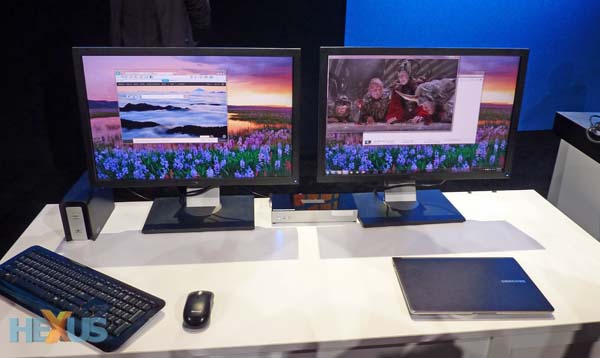The next big step for wireless communications will be the widespread adoption of 802.11ac technology. Though routers and client adaptors have recently become available, with Buffalo, Netgear and ASUS leading the way, 802.11ac's final specification is expected to be approved late next year. 802.11ac is a big deal because it enables speeds of up to 1Gbit/s from a single-antenna source, rising to near-7Gbit/s for a multi-antenna, multi-station solution.
Intel, however, is looking further ahead than 802.11ac. Justin Rattner, the firm's chief technology officer, and Ali Sadri, chairman of the Wireless Gigabit Alliance (WGA), demonstrated 802.11ad technology, which is also known by the more marketing-friendly name of WiGig.
WiGig operates in the unlicensed 60GHz band and can provide multi-gigabit throughput comparable to 8-antenna 802.11ac, albeit at lower power, according to Sadri. It is also backward-compatible with all current standards, too.

Get rid of those wires
Sadri demonstrated practical uses for such high-speed technology by wirelessly transmitting high-definition videos from an external hard disk to an also-WiGig-enabled Ultrabook that in turn beamed them to a multi-output dock situated between the two monitors. The dock was connected to each monitor via regular HDMI cabling. The purpose here was to show that high-bandwidth content could be transferred without the need for pesky I/O wires connected to the Ultrabook. The test setup had a peak bandwidth of 3.5Gbit/s, ensuring plenty of throughput for other tasks. From what I could tell from a cursory look, latency didn't seem to be an apparent issue.

The WGA consortium has big plans for WiGig. They believe that future devices such as hard drives, tablets, computers and monitors will incorporate WiGig chips and users will be able to do away with docks, leaving a genuinely cable-free computing environment. The technology works best when within a 10-metre line-of-sight of the display, by the way, making it useful for both home and office environments
Sadri believes the first WiGig devices will be available some time in 2013... though such vague couching usually means we'll see it in the later part of the year.













